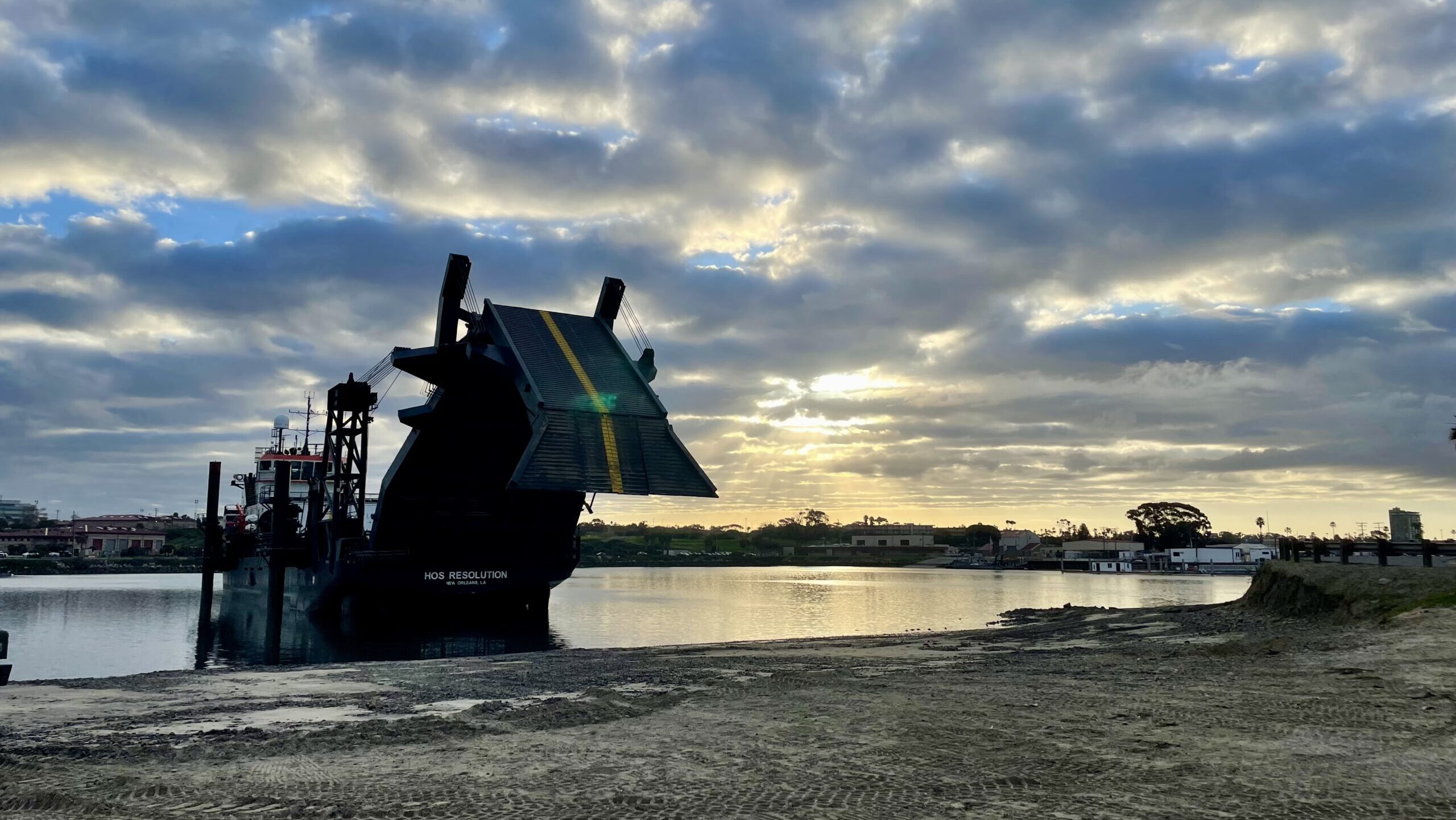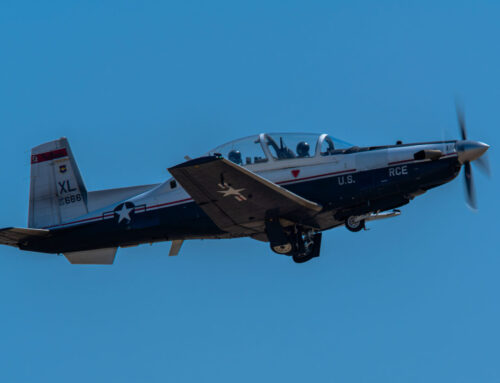During sunrise on March 1 at Camp Pendleton, the USMC lowered the ramp of its first stern landing vessel prototype. (Ashley Roque/ Breaking Defense)
WASHINGTON — The US Marine Corps’ primary technology development agency is preparing for a series of tests with the Australian Army using an experimental ship that will inform the service’s future island-hopping vessels.
The experimental ship in question is the Stern Landing Vessel (SLV) which the Marine Corps Warfighting Laboratory last year started experimenting with as a means to define requirements for the envisioned Medium Landing Ship (LSM). The LSM is part of the Marine Corps’ ongoing Force Design and will be purpose-built to bring Marine Littoral Regiments and their gear from island to island in places such as the Indo-Pacific’s first island chain.
Brig. Gen. Simon Doran, commander of MCWL, said today at the Defense News Conference that the “foreign collaborative” tests would take place around Australia over the next several years in conjunction with the Australian Army.
Doran described SLV as having four “feet” that can be planted into the ground while in shallow water to provide stability, as well as a 150-foot ramp that allows Marines and their vehicles quick entry and exits to and from the beach.
“All of these are part of what we call the littoral maneuver bridging solution,” he said. “And so that provides input to us for things that we can then place into our Medium Landing Ship, because that’s really where we’re hedging our bet for littoral maneuver in the future.”
The Stern Landing Vessel, a modified oil-rig industry off-shore support vessel, prepares to drop its ramp onto the beach in order to load cargo as part of Project Convergence Capstone Four, Feb. 22, 2024 at the Del Mar Boat Basin, Camp Pendleton, CA. (U.S. Marine Corps photo by Kevin Ray J. Salvador)
Since acquiring its first SLV in February 2023, Doran said the Marines have encountered some challenges using it, including having to be careful where to place the ship’s “feet” without causing environmental damage as well as considering an appropriate gradient for the ramp depending on the beach conditions.
But he said that the commandant has dubbed this sort of mobility in a contested environment a top priority.
“That’s where we’re putting a lot of effort, and that goes into the Stern Landing Vessel as well as the Autonomous Low Profile Vessel and others to enable us to really have a proper understanding of what our true requirements are,” he said.
The ALPV is a separate ship the Marines are experimenting with focused on covert resupply missions. Doran described the ALPV as a 55-foot-long, “narco boat” that can carry virtually any kind of supplies and is capable of traveling autonomously for hundreds of miles. The vessel, Doran added, was accelerated through the Pentagon’s RDER program.
An Autonomous Low-Profile Vessel stands by at the Del Mar Boat Basin as part of Project Convergence Capstone Four, Feb. 23, 2024 at Camp Pendleton, CA. (U.S. Marine Corps photo by Kevin Ray J. Salvador)
He said one of the challenges of testing the ALPV is having “chase ships” available to ensure the ALPV doesn’t interfere with commercial traffic or environmental features. The Marines plans to send an ALPV to III Marine Expeditionary Force, which is headquartered in Japan, later this fall for more testing, he added.
“What’s really interesting, from my perspective, is we actually took a Marine cook and in 21 days, we trained him to operate this system using [proliferated low earth orbit], and we were able to drive it from islands in Japan while it’s operating off the West Coast of the United States,” he said. “And that’s an example there of a capability that then can enable us to have resupply with a risk-worthy vessel in contested environments.”











